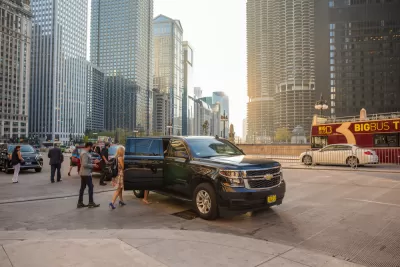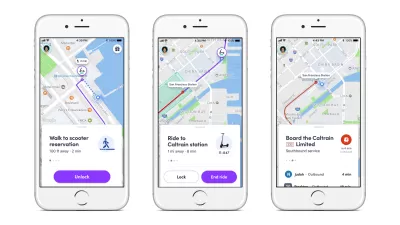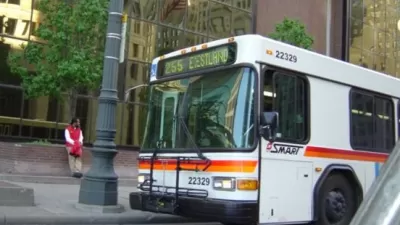New research finds that, done right, working with ride-hailing companies can save public agencies money.

A study on the growing trend of partnerships between transit agencies and ride-hailing services provides an overview of 29 models around the country, comparing the the risks and benefits of these agreements and the different forms they've taken over time.
The research from DePaul University's Chaddick Institute for Metropolitan Development found that public agencies tend to pursue transit network companies for a few main purposes: to fill gaps in service, to provide first- and last-mile connections to stations, and to integrate an element of demand response into the system.
In Metro Magazine, the study authors argue that despite the risks, "preliminary evidence suggests that a properly designed program can be a bargain when compared to the cost of buying buses and paying for labor, fuel, and maintenance on lightly used routes."
One popular model is "incorporating payment for both ride-shares and transit—and connections between the two—on a single app." In another common arrangement, cities subsidize rides that begin or end at a transit station. But this setup isn't always sustainable, and hasn't made it far in larger cities, the authors note.
FULL STORY: Transit Agencies' Mobility-Enhancing Partnerships with TNCs on the Rise

Planetizen Federal Action Tracker
A weekly monitor of how Trump’s orders and actions are impacting planners and planning in America.

Chicago’s Ghost Rails
Just beneath the surface of the modern city lie the remnants of its expansive early 20th-century streetcar system.

San Antonio and Austin are Fusing Into one Massive Megaregion
The region spanning the two central Texas cities is growing fast, posing challenges for local infrastructure and water supplies.

Since Zion's Shuttles Went Electric “The Smog is Gone”
Visitors to Zion National Park can enjoy the canyon via the nation’s first fully electric park shuttle system.

Trump Distributing DOT Safety Funds at 1/10 Rate of Biden
Funds for Safe Streets and other transportation safety and equity programs are being held up by administrative reviews and conflicts with the Trump administration’s priorities.

German Cities Subsidize Taxis for Women Amid Wave of Violence
Free or low-cost taxi rides can help women navigate cities more safely, but critics say the programs don't address the root causes of violence against women.
Urban Design for Planners 1: Software Tools
This six-course series explores essential urban design concepts using open source software and equips planners with the tools they need to participate fully in the urban design process.
Planning for Universal Design
Learn the tools for implementing Universal Design in planning regulations.
planning NEXT
Appalachian Highlands Housing Partners
Mpact (founded as Rail~Volution)
City of Camden Redevelopment Agency
City of Astoria
City of Portland
City of Laramie





























